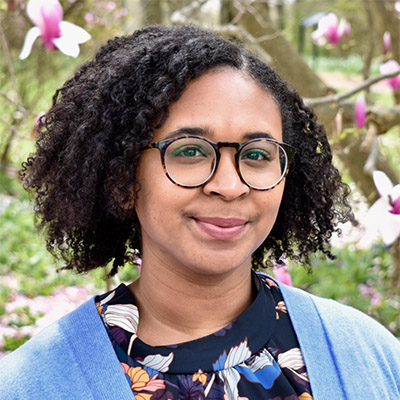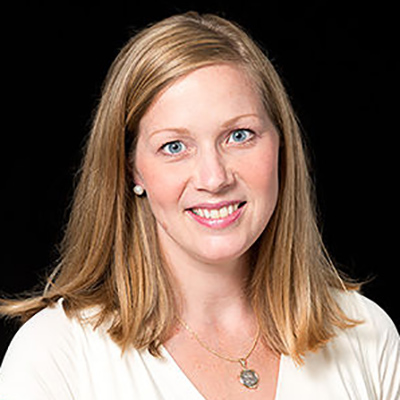Reflecting on Critical Conversations: Addressing Diversity, Equity, and Inclusion
by Elizabeth Humphrey
In September, the Decorative Arts Trust held its inaugural program in the Critical Conversations series. Critical Conversations is a quarterly gathering intended to foster meaningful change in the decorative arts field.
I had the opportunity to moderate the first discussion in this series, titled Decorative Arts and Addressing Diversity, Equity, and Inclusion, which brought four leaders at major civic institutions together to discuss interpretation, curation, and ethics and to consider how the field might move forward in the future. Panelists Dennis Carr, Alyce Perry Englund, Nonie Gadsden, and Joanne Hyppolite drew from their professional experiences to respond to questions and think about how the field might inspire change among the current and next generation of scholars. By highlighting a few key quotes from the discussion, this article will provide insight into the program and consider the path forward.
Inclusivity and the Visitor Experience
“Docents are incredibly important in terms of carrying out this mission and message of social equity.” — Alyce Perry Englund, Associate Curator of American Decorative Arts, The Metropolitan Museum of Art
Alyce’s statement testifies to the importance of education and engagement as part of the work of scholars. It is not enough to simply research individual objects; one must think about effectively interpreting objects to reveal new histories. To do this successfully in a museum requires teamwork. Docents are often the most visible members of the museum staff. They are on the front lines of visitor experience, shaping how people understand objects and learn about the past. Docent cohorts often are made up of mostly white volunteers, so the prospect of talking about race or difficult history may seem daunting and improbable. In a 2020 Slate article entitled “Museums Have a Docent Problem,” it appears that race and difficult history are a recurring obstacle in interpretation.1 Incidents of racism and racial insensitivity involving docents are not uncommon.
Moreover, docents often do not have the language or framework needed to contextualize objects inclusively. Proper training needs to be given to docents to understand their role in impacting audiences’ perceptions of objects and recognizing that their authority in the museum carries weight. Alyce offered suggestions for how she tackles this issue. By providing workshops and sensitivity training, Alyce empowers her docents to handle difficult questions and equips them with the tools needed to interpret topics such as slavery, immigration, colonization, and equity.
Collecting for Inclusivity
“I remember asking…‘500 years of African American history and culture—all this stuff is in the museums already. Where are we going to find everything we need to fill this space?’ [But] I realized that everything had not been collected yet.” — Joanne Hyppolite, Supervisory Curator of the African Diaspora, National Museum of African American History and Culture
Joanne’s recollection serves as a critical reminder that there are many stories waiting to be rediscovered and shared and that our research is not confined merely to what is held publicly. As she posed her initial question, Joanne came to realize that community members were holding onto artifacts, objects, art, and ephemera that told the story of the African diaspora, a narrative partially seen in major museums. As scholars and lovers of the decorative arts, we often rely on known and extant objects to inform us about the past’s life and society. It is always essential to consider the significance of absence, the lack of objects, representation, or documentation that might tell us about the past and its people.
Contributing to an Inclusive Curatorial Practice
“It’s not the responsibility of people of color to do this kind of research. It’s a responsibility for all of us.” — Nonie Gadsen, Katharine Lane Weems Senior Curator of American Decorative Arts and Sculpture, Museum of Fine Arts, Boston
“We need to bring more voices into the decorative arts field. We have a great opportunity to mine more deeply all of the different narratives from these objects, but we need more people doing it.” — Dennis Carr, Virginia Steele Scott Chief Curator of American Art, The Huntington Library, Art Museum, and Botanical Gardens
Nonie and Dennis’ observations are interconnected. Scholarship on the decorative arts benefits from a plurality of voices and specialists; the histories represented in the objects belong to everyone. The decorative arts, museum, and cultural heritage fields are primarily comprised of white professionals. Most major institutions have committed to diversity, as reflected in their recent acquisitions and exhibitions.2 Still, this commitment has not yielded a significant increase in hiring for diverse ethnic and racial backgrounds. While there is some traction growing among the new generation of scholars, the decorative arts field and its current scholars must recruit more emerging scholars to bring more perspectives to scholarship. Diversity in this regard might mean considering interdisciplinary or non-traditional scholars or studying more social history as embedded within decorative arts. It also means considering the labor and experiences of Black, Indigenous, and People of Color related to decorative arts, design, and architecture. As Nonie stated, it is not solely the responsibility of people of color to tell a fuller history of their culture and ancestors’ experiences. These histories comprise the totality of our national and global history. All scholars should have a responsibility to mine this history for its gaps and make visible new connections and stories to share with the public.
The statements above stress the importance of interpretation, exploration, and participation to preserve and grow the decorative arts field. The challenge in creating new paths forward is that they require a level of risk-taking to move away from the traditional way of curating, interpreting, and researching to make room for more inclusive action methods. It is my hope that by reflecting on some of the statements made during the Trust’s first Critical Conversation, we can prompt new ways of thinking and effect change in the broader field.
1 Sophie Haigney, “Museums Have a Docent Problem,” Slate, August 18, 2020.
2 Mary Carole McCauley, “Baltimore Museum of Art will only acquire works from women next year: ‘You have to do something radical,’ The Baltimore Sun, November 15, 2019. Accessed October 13, 2020.
Elizabeth Humphrey is the Curatorial Assistant and Manager of Student Programs at the Bowdoin College Museum of Art. She moderated the Decorative Arts and Addressing Diversity, Equity, and Inclusion Critical Conversation virtual program on September 2, 2020.
A print version of this article was published in The Magazine of the Decorative Arts Trust, one of our most popular member benefits. Join today!





